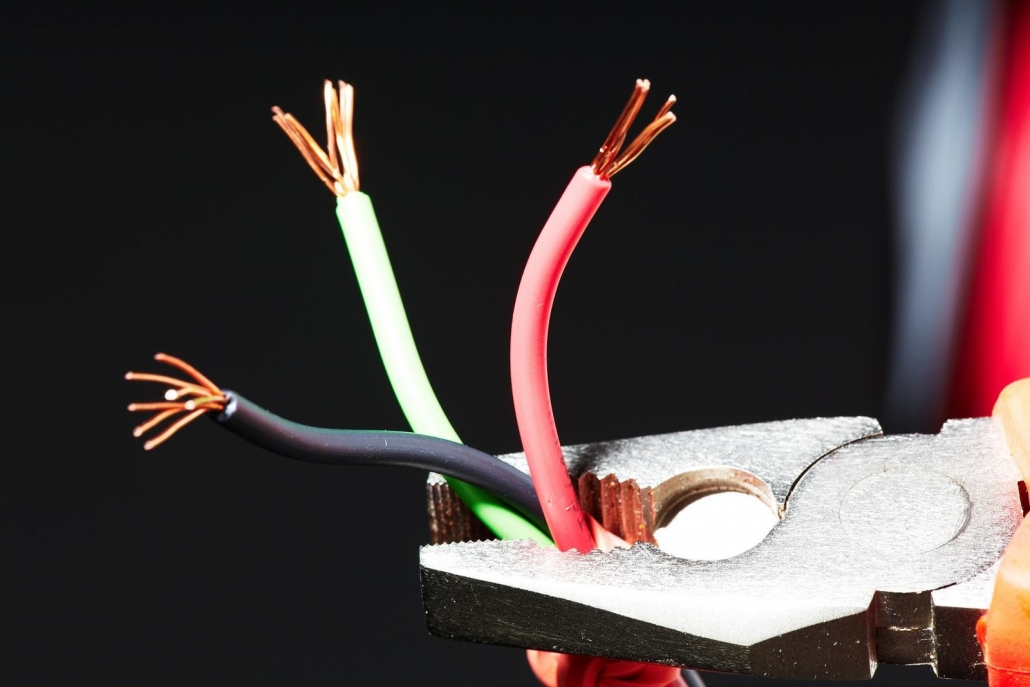All You Need To Know About Electrical Wire Color Code
Your home wiring is an important part of the house electrical system and if your home was built after 1960, or if the wiring has been updated since, then most likely the electrical wires follow certain color standards. While it’s never a good idea to start fumbling with electrical wires for obvious safety reasons, it’s good to have a basic understanding of the electrical wire code.
All wires in your home, regardless of the electrical wire color code, could potentially carry electricity at some point. Therefore, it’s critical to treat each and every color with caution. Better yet, consider leaving all electrical work to qualified and licensed electricians.
There is quite an array of colors when it comes to residential wires, from black and white to bare copper to more colorful options like green, yellow or blue. Having an understanding of what each color represents and the purpose of the wire is good, even if you’re not a DIY-er.
When it comes to cables, one thing to know is that the color of the sheathing is related to usage. White sheathing for example shows you that the wires inside are 14-gauge, whereas yellow sheathing tells you they are 12-gauge wires. Looking further in, at the colors of the wires, these depend on the intended purpose.
The National Electrical Code (NEC) states that neutral conductors must be white or gray, whereas ground wires must be green or bare copper. All the other colors are more general, industry-accepted or standardized rules.
1. Black Wires
Black is a standard electrical wire color code for hot wires. These are used to transfer electricity through all types of circuits to your outlets and switches. Often, they are also used to connect a switch to the electrical load, which makes them switch legs in circuits.
Black wires are live at all times and they are very common in standard residential wiring. You’ll see black wires being referred to as “hot” in many graphic representations. This means they carry power from your electrical panel to a certain destination. Sometimes, white wires are allowed for the same purpose if marked with electrical tape, but the opposite is not true. So a black wire can never be used as a ground or neutral wire, or any other purpose for that matter.
2. Red Wires
Red wires are also hot, and they’re called secondary live wires in 240- and 220-volt circuits. They too can be used as switch legs in certain circuits. However, one of the most useful applications of this electrical wire color code is connecting hardwired smoke detectors to the power system.
You can also use red wires to interconnect smoke detectors so that if one of them is triggered, the others go off simultaneously. Red wires can be linked together, and they can also be linked to black wires.
3. Blue & Yellow Electrical Wires
Blue and yellow electrical wires are used sometimes as hot wires, but not for typical outlet wiring. They are usually live wires pulled through a conduit. An example would be yellow wires used as switch legs to structural lights or ceiling fans. They can also be used for outlets that are paired with light switches.
Blue wires are often used for 3 or 4-way switches, such as light switches at the top and bottom of your staircase controlling the same light. Very rarely, blue and yellow wires can be found in NM cable.
4. White and Gray Electrical Wires
White and gray electrical wires are neutral. In most households, white is the predominant color, but you can also see gray wires and they serve the exact same function. These connect to the neutral bus bar in the main electrical panel, carrying power back to it rather than from the panel to a device. White and gray wires can only connect to the same color or each other.
Even though they are called neutral, these wires can still carry a certain amount of current, which mostly happens when a circuit load is unbalanced. This means they can still shock you, therefore they should also be handled with caution. Also, sometimes they are wrapped in electrical tape, which indicates a hot wire, not a neutral one.
5. White Wires With Red/Black Tape
As mentioned above, if a white wire has a black tape or red color marking, then that means it’s being used as a hot wire and not a neutral one. The tape is usually wrapped around the insulation. This happens when, for instance, a 2-wire cable needs a second hot wire for a 240-volt circuit or appliance.
6. Green Wires
Last, but not least, green wires are ground wires, which means they are used to ground an electrical circuit. They run from the grounding terminal in an outlet to the ground bus bar in the electrical panel. Just like with white color, green wires can only connect to the same color.
If a fault happens within the circuit, then green wires can become live, as they provide electricity a way to escape into the ground. Ground screws on certain electrical devices are also often painted in green. Green wires should never be used for any other purpose than grounding.



